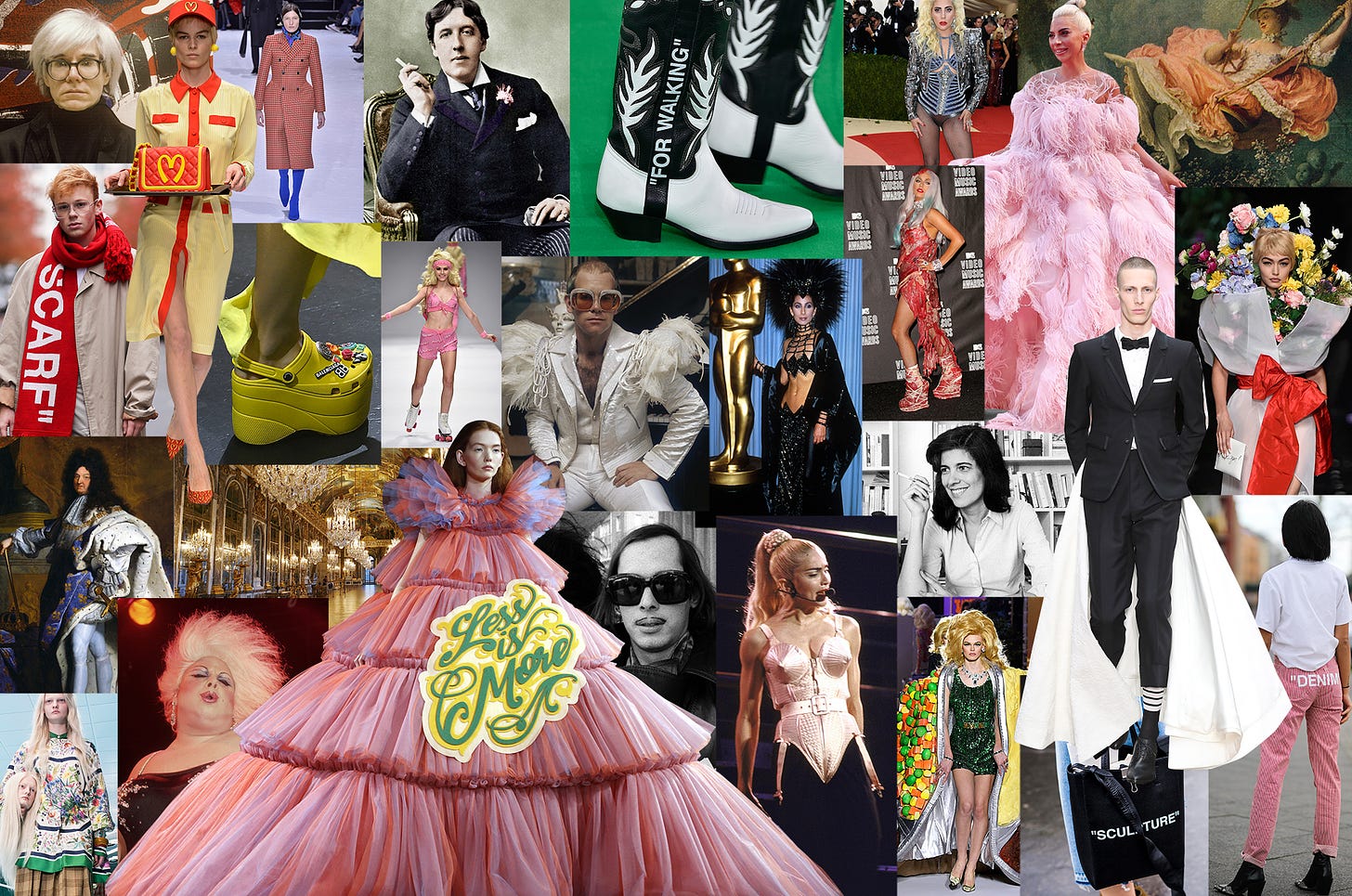Aesthetics and Morality
Last week I was rereading Susan Sontag’s essay “Notes on Camp” where she attempts to describe an aesthetic sensibility. The reason I was reading it is, for my book project, I’m trying to think about different ways of approaching cultural objects and works of art beyond determining and evaluating what they are “about.” A Camp sensibility strikes me as one way to think about this. Check out this quotation, for example:
Camp taste is, above all, a mode of enjoyment, of appreciation— not judgment. Camp is generous. It wants to enjoy. It only seems like malice, cynicism. (Or, if it is cynicism, it’s not a ruthless but a sweet cynicism.) Camp taste doesn’t propose that it’s in bad taste to be serious; it doesn’t sneer at someone who succeeds in being seriously dramatic. What it does is to find the success in certain passionate failures.
Camp taste is a kind of love, love for human nature. It relishes, rather than judges, the little triumphs and awkward intensities of ‘character’… camp taste identifies with what it is enjoying. People who share this sensibility are not laughing at the thing they label as ‘a camp,’ they are enjoying it. Camp is a tender feeling.

(Image: collage of images from a Time article about the Camp themed met gala)
In some ways, this mode of enjoyment without judgment is exactly the attitude that decades of Christian “cultural engagement” has been trying to get away from. It implores us to take culture seriously and understand the assumptions and messages at work. Certainly, I don’t want to undermine that warning. However. I think the seriousness of worldview analysis etc also tends toward a particular kind of aesthetic. I’m thinking here about the Buffy vs Sopranos line Emily Nussbaum analyzes in I Like to Watch. Certain kinds of entertainment get embraced and analyzed and discussed by Christians and others get dismissed and ignored. And there’s a certain kind of suffering-as-virtue underlying the aesthetic judgments that are more reminiscent of our imagining of the Puritans than their real joyful values.
Here’s something else I read this week: a description of the “millennial aesthetic” and where it came from. Again, it’s tying aesthetic choices to particular values or impulses or rejections. I don’t mean to insult this aesthetic, I’m frequently a participant in it. But elements like “safety” and “nonthreatening” might not have moral weight in themselves, but they do, perhaps, make it easier for us to see and choose some kinds of moral choices and not others.
This question seems a bit more urgent in light of a recent executive order that all new federal buildings be made in the “classical” style. At first this might seem like a mere matter of taste or a preference for tradition. But an administrative demand for a particular style is in and of itself authoritarian, and this particular style is also the one embraced by the Nazi party. This particular choice, for the Nazis and others, symbolizes a rejection of non-white cultural influence and an elevation of white/European tradition as inherently superior. (I’m sure an art historian would be able to easily poke holes in the assumptions underlying this move but that’s the values explicitly underneath the preference).
I also think about how I used to hear people say things like “I like all kinds of music except country and rap” which sure sounds like distancing from two specific identities: rural and black. I don’t think aesthetic preference itself can be a problem, but perhaps aesthetic narrowness too easily translates into rejection not just of color schemes or instruments, but the people and values associated with them.
I’m not done thinking about this, love to hear from you with thoughts and reading recs on this one. Feel free to also pass on this newsletter to others who might be interested and invite others to subscribe. I’m turning on comments for this, so if you want to chat about it with others, you can do so there as well.


